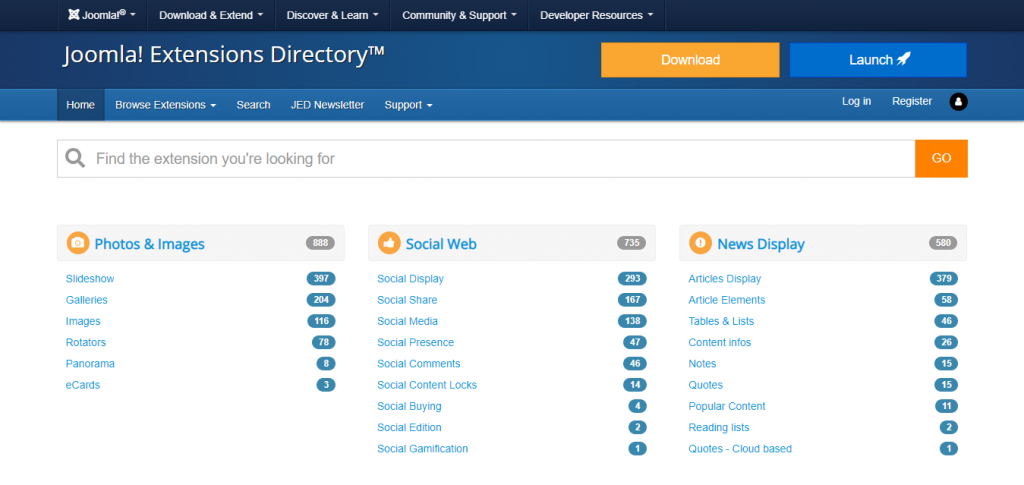Joomla is the second most popular CMS after WordPress. It can be used to build any website, be it for a personal project or business. This is due to the vast amount of extensions available online.
Whether it’s for site management or core enhancements, the extensions allow you to develop your site further. They fall under several categories:
Component – mini-applications that are responsible for the site’s main elements, content, and menu items.
Modules – allows you to add widgets around the component, such as a footer or a “Recent added Articles” box on the sidebar.
Plugins – provides additional functions such as adding a music player, or social media share buttons to enhance your website’s performance.
Templates – a set of design and layout to make your website aesthetically pleasing and user-friendly.
Languages – offers translation packs for creating a multi-language site.
You can find them on the official Joomla! Directory and other third-party sources, such as Joomlart and Joomdev.

With this flexibility, Joomla has been used by many famous brands and organizations. Including Harvard University, Linux.com, Guggenheim, MTV Greece, and the UNRIC (United Nations Regional Information Centre for Western Europe). This platform may indeed have a steeper learning curve compared to other CMS.



